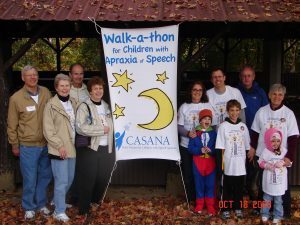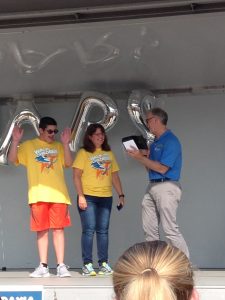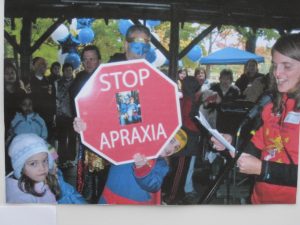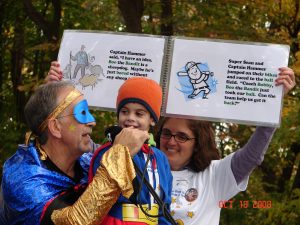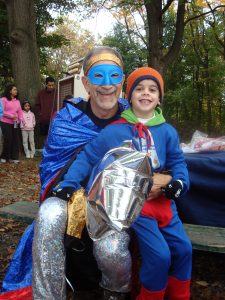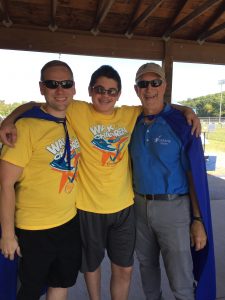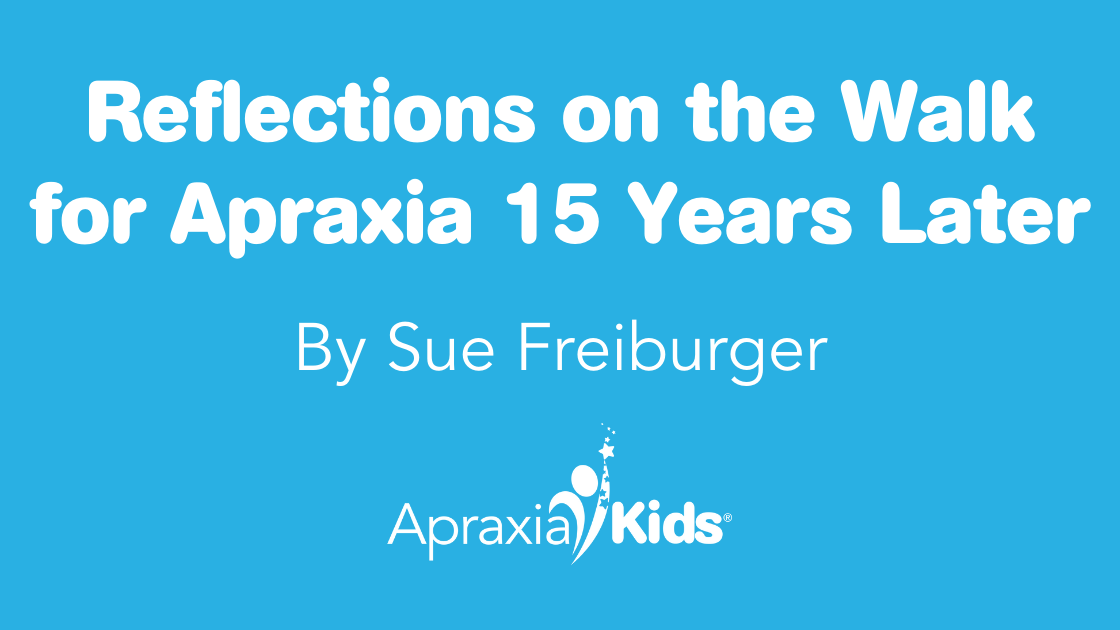
15 May Reflections on the Walk for Apraxia 15 Years Later by Sue Freiburger
As we enter the 15th Walk for Apraxia season, I can’t help but think back to the first walk I organized in Pittsburgh, PA. The idea for a walk came from my 6-year-old son, who had been diagnosed as profoundly apraxic at age 3. We were driving through North Park, and I heard his sweet voice from the back of the car asking me about a large sign for an upcoming fundraiser in the park. I told him that the sign was for a fundraising walk for dyslexia. He asked me, “When is the walk for apraxia?” I was overwhelmed by the realization that I was having a conversation with my profoundly apraxic son, something that I had never thought possible. I promised him that I would contact Apraxia Kids (formerly CASANA) to find out if they had a walk. Apraxia Kids, 15 years ago, was run by several amazing moms, who volunteered their time and talents to help other families faced with the same diagnosis. I joined their team when I agreed to try to figure out how to plan a walk for Apraxia. It has been an incredibly rewarding experience to see how the walks have grown from this tiny idea to a nationwide event and to know that so many other families are walking the same path that we started 15 years ago.
I had no experience fundraising but I knew that if I was going to make this happen, that it would have to be all about our Apraxia Stars. They work so hard every day and often times spend their afternoons at speech therapy appointments rather than getting to go play with friends or do other after school activities. I also wanted to make the event a place where parents would have a chance to meet other local families who would understand their daily struggles. I hoped that if I built the walk around those goals that we would also be able to fundraise a small amount for Apraxia Kids. Imagine my surprise when that first walk raised $60,000!! Families from as far away as Columbus, OH and NYC came to join us so I knew there was a desire to come together.
As I walked alongside Tiffany Bafford, the mom who came with her family from Columbus, we imagined spreading these walks to other communities and she became the 2nd Apraxia Walk coordinator. Every year after that, more parents came forward and became walk coordinators and the walks spread around the country. We added the virtual walk and people sent us photos from as far away as the Rock of Gibralter and Australia. This is when I knew we were on the right track and were building something greater than I could have ever imagined.
I have traveled to attend walks in many cities and although the structure of the walks has evolved over the years, I am always brought to tears when I see the smiles on the faces of our Apraxia Stars when I see them realize that the day is all about celebrating them. They get so excited to get their medals and see their team signs. The Walk for Apraxia is a way for families to connect with other families in the apraxia community on a personal level and it helps to raise awareness in the community. I see parents relax when they realize that everyone there understands what apraxia is and I am so happy to see them connecting with professionals and families from their community. I always take a moment to step back and recall that little voice from the back seat of my car, a voice that I was told I might never hear, and think “we did it!” With the help of volunteers around the country we have built a community through the Walk for Apraxia.
Apraxia Kids has been able to grow as an organization largely in part to the funds raised by the Walk for Apraxia. Countless SLPs have been able to receive advanced training, iPads have been awarded to families to provide a voice to children with apraxia, resources have been developed to educate professionals and families, and we have been able to raise awareness about Childhood Apraxia of Speech. Although taking the first step was hard, I am so happy that I did because I know that being part of the Walk for Apraxia community means so much to so many people. Walking together reminds us all that we are not on this journey alone.
As we enter the 15th Walk for Apraxia season, I can’t help but think back to the first walk I organized in Pittsburgh, PA. The idea for a walk came from my 6-year-old son, who had been diagnosed as profoundly apraxic at age 3. We were driving through North Park, and I heard his sweet voice from the back of the car asking me about a large sign for an upcoming fundraiser in the park. I told him that the sign was for a fundraising walk for dyslexia. He asked me, “When is the walk for apraxia?” I was overwhelmed by the realization that I was having a conversation with my profoundly apraxic son, something that I had never thought possible. I promised him that I would contact Apraxia Kids (formerly CASANA) to find out if they had a walk. Apraxia Kids, 15 years ago, was run by several amazing moms, who volunteered their time and talents to help other families faced with the same diagnosis. I joined their team when I agreed to try to figure out how to plan a walk for Apraxia. It has been an incredibly rewarding experience to see how the walks have grown from this tiny idea to a nationwide event and to know that so many other families are walking the same path that we started 15 years ago.
I had no experience fundraising but I knew that if I was going to make this happen, that it would have to be all about our Apraxia Stars. They work so hard every day and often times spend their afternoons at speech therapy appointments rather than getting to go play with friends or do other after school activities. I also wanted to make the event a place where parents would have a chance to meet other local families who would understand their daily struggles. I hoped that if I built the walk around those goals that we would also be able to fundraise a small amount for Apraxia Kids. Imagine my surprise when that first walk raised $60,000!! Families from as far away as Columbus, OH and NYC came to join us so I knew there was a desire to come together.
As I walked alongside Tiffany Bafford, the mom who came with her family from Columbus, we imagined spreading these walks to other communities and she became the 2nd Apraxia Walk coordinator. Every year after that, more parents came forward and became walk coordinators and the walks spread around the country. We added the virtual walk and people sent us photos from as far away as the Rock of Gibralter and Australia. This is when I knew we were on the right track and were building something greater than I could have ever imagined.
I have traveled to attend walks in many cities and although the structure of the walks has evolved over the years, I am always brought to tears when I see the smiles on the faces of our Apraxia Stars when I see them realize that the day is all about celebrating them. They get so excited to get their medals and see their team signs. The Walk for Apraxia is a way for families to connect with other families in the apraxia community on a personal level and it helps to raise awareness in the community. I see parents relax when they realize that everyone there understands what apraxia is and I am so happy to see them connecting with professionals and families from their community. I always take a moment to step back and recall that little voice from the back seat of my car, a voice that I was told I might never hear, and think “we did it!” With the help of volunteers around the country we have built a community through the Walk for Apraxia.
Apraxia Kids has been able to grow as an organization largely in part to the funds raised by the Walk for Apraxia. Countless SLPs have been able to receive advanced training, iPads have been awarded to families to provide a voice to children with apraxia, resources have been developed to educate professionals and families, and we have been able to raise awareness about Childhood Apraxia of Speech. Although taking the first step was hard, I am so happy that I did because I know that being part of the Walk for Apraxia community means so much to so many people. Walking together reminds us all that we are not on this journey alone.
Credentials:
Hours of Operation:
Treatment locations:
Address:
,
Phone:
Email:
Overall Treatment Approach:
Percent of CAS cases:
Parent Involvement:
Community Involvement:
Professional consultation/collaboration:
Min Age Treated:
Max Age Treated:
Insurance Accepted:



